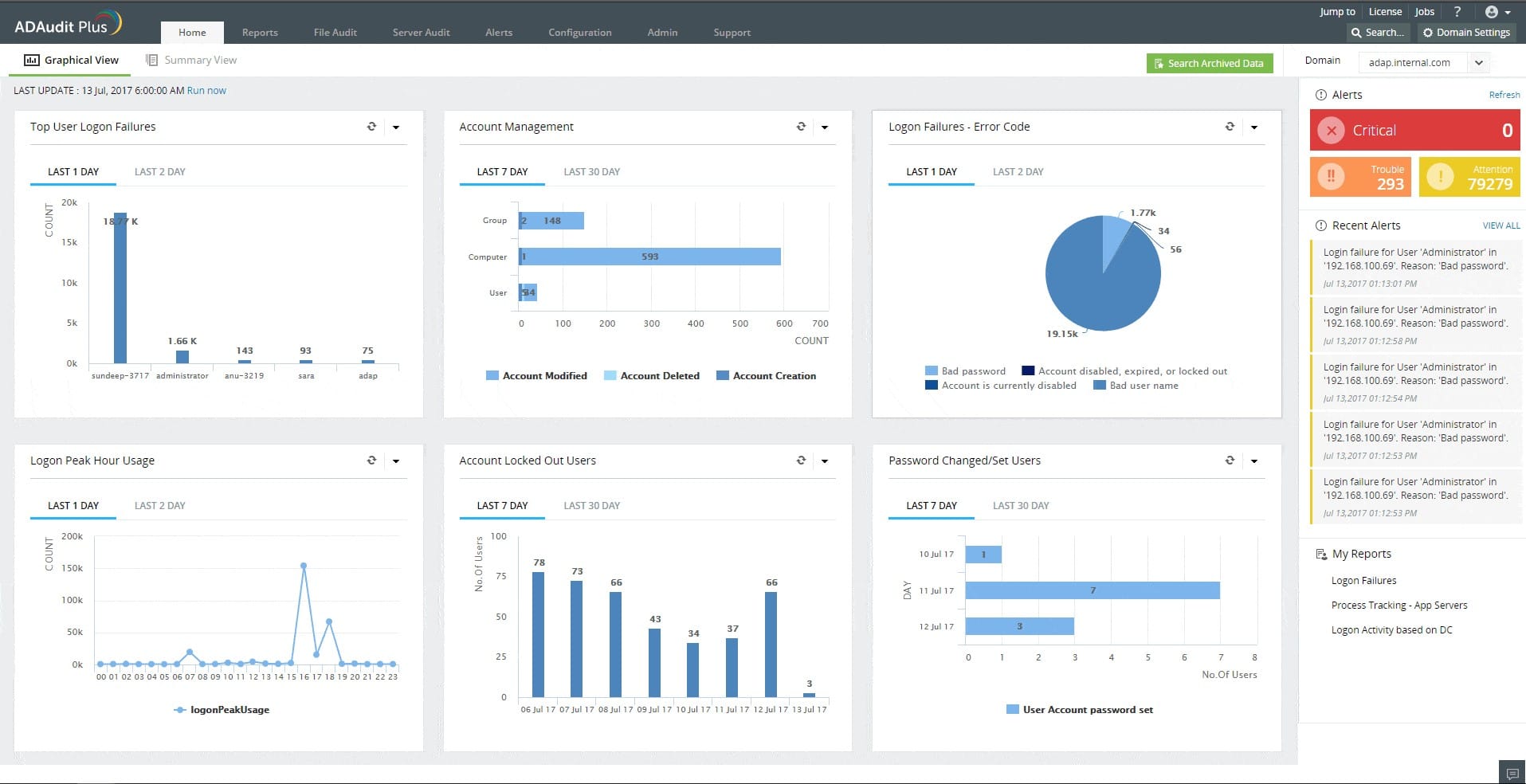We may earn a commission if you make a purchase through the links on our website.
What is User and Entity Behavior Analytics (UEBA)?

UPDATED: August 23, 2024
User and Entity Behavior Analytics (UEBA) is a cybersecurity technology that detects anomalies by analyzing the behavior of users and entities within a network. It builds behavior profiles based on data from logs, network traffic, and other sources.
By establishing a baseline of typical activities, UEBA can identify deviations that might indicate threats like insider attacks or compromised accounts. This method enhances the detection of sophisticated attacks that traditional systems might overlook.
How Does User & Entity Behavior Analytics Work?
- Data Collection UEBA collects data from multiple sources such as logs, network traffic, and application usage. This data includes user activities, device interactions, and access patterns. It ingests data in real-time or batch mode, depending on the system's configuration. The data is then normalized and stored for further analysis.
- Behavior Profiling The system uses machine learning algorithms to analyze the collected data and create behavior profiles. These profiles represent normal user and entity behavior within the network. The algorithms continuously update these profiles as new data comes in. This dynamic profiling ensures that the system adapts to changing behavior patterns.
- Anomaly Detection UEBA compares current activities against established behavior profiles to detect anomalies. When an activity deviates significantly from the norm, the system flags it as suspicious. This process involves statistical analysis and pattern recognition. Detected anomalies are prioritized based on risk levels and potential impact.
- Integration and Response UEBA integrates with other security tools like SIEM, NTA, and IAM systems. This integration allows for a comprehensive view of security events and streamlines incident response. Alerts generated by UEBA can trigger automated responses or be sent to security teams for manual investigation. This coordinated approach enhances overall network security.
UEBA vs. SIEM, UEBA vs. NTA, and UEBA vs. IAM
- UEBA vs. SIEM: UEBA focuses on behavior analysis, identifying anomalies by profiling users and entities. SIEM (Security Information and Event Management) primarily collects and analyzes log data to detect known threats using predefined rules. While SIEM provides broad visibility into security events, UEBA offers deeper insights into behavioral anomalies. Combining UEBA with SIEM enhances threat detection by addressing both known and unknown threats.
- UEBA vs. NTA: Network Traffic Analysis (NTA) monitors network traffic for unusual patterns. NTA focuses on detecting threats based on network behavior and anomalies in data flow. UEBA, on the other hand, profiles both network entities and users, providing a more comprehensive analysis of behavior. Integrating UEBA with NTA allows for more accurate threat detection across both user activities and network traffic.
- UEBA vs. IAM: Identity and Access Management (IAM) controls user access based on policies and roles. IAM ensures that users have appropriate access rights and helps prevent unauthorized access. UEBA complements IAM by monitoring the behavior of users with access rights, identifying suspicious activities that IAM alone might miss. Together, they provide a robust approach to managing and monitoring user access and behavior.
UEBA Use Cases
- Insider Threat Detection UEBA excels at identifying insider threats by analyzing deviations in user behavior. For example, it can detect unusual access patterns, like an employee accessing sensitive files outside their typical scope of work. This helps in spotting potential data theft or sabotage from within the organization. Continuous monitoring and behavior profiling make it difficult for insider threats to go unnoticed.
- Compromised Account Detection When user accounts are compromised, their behavior often changes. UEBA detects these changes, such as unusual login times or accessing resources not typically used by the account. This is crucial for identifying and mitigating threats from stolen credentials. Early detection allows for rapid response, minimizing potential damage.
- Advanced Persistent Threats (APTs) APTs involve prolonged and targeted cyber-attacks. UEBA can identify the subtle and persistent activities typical of APTs. By monitoring and analyzing long-term behavior patterns, UEBA spots anomalies that indicate ongoing infiltration. This enables organizations to detect and respond to APTs more effectively than traditional methods.
- Regulatory Compliance UEBA helps organizations comply with regulatory requirements by providing detailed user activity monitoring and reporting. It can generate reports that demonstrate adherence to data protection standards and access control policies. This is particularly useful for industries with strict compliance needs, such as finance and healthcare. Automated monitoring reduces the burden of manual compliance checks.
User Behavior Analytics Challenges
- Data Volume and Complexity Managing the vast amounts of data generated by user activities can be challenging. UEBA systems need to process and analyze large datasets in real-time. This requires significant computational resources and efficient data management strategies. Ensuring data integrity and consistency adds another layer of complexity.
- False Positives UEBA systems can generate false positives, flagging normal activities as suspicious. This can overwhelm security teams with alerts, making it hard to prioritize real threats. Fine-tuning the system to balance sensitivity and specificity is crucial. Continuous learning and adjustment are needed to reduce false positives.
- Integration with Existing Systems Integrating UEBA with other security tools and IT infrastructure can be complex. Compatibility issues and data silos can hinder effective integration. Ensuring seamless data flow between systems is essential for comprehensive threat detection. Customizing integrations to fit specific organizational needs can be time-consuming.
- Privacy Concerns Monitoring user behavior raises privacy concerns and potential legal implications. Organizations must ensure that their UEBA implementation complies with privacy regulations. Transparent policies and user consent are essential to address these concerns. Balancing security and privacy is a critical challenge for UEBA deployments.
ManageEngine ADAudit Plus helps administrators overcome the common yet complex challenges of implementing UEBA effectively. ADAudit Plus manages large data volumes with real-time ingestion and advanced data processing, ensuring data integrity and consistency. It reduces false positives through dynamic machine learning algorithms that accurately distinguish between normal and suspicious activities.
The platform integrates seamlessly with various security tools, facilitating smooth data flow and comprehensive threat detection. If you want to fast-track your UEBA implementations, you can try ADAudit completely through a 30-day free trial.
User and Entity Behavior Analytics Best Practices
- Define Clear Objectives Start by identifying the specific threats you want to detect with UEBA. Set measurable goals, such as reducing the number of undetected insider threats by a certain percentage. Document these objectives and align them with your overall security strategy. Involve stakeholders from various departments to ensure comprehensive coverage. Regularly review and update these objectives to reflect changes in your threat landscape.
- Ensure Data Quality Collect data from all relevant sources, including logs, network traffic, and application usage. Implement rigorous data validation to remove duplicates and correct errors. Normalize the data to ensure consistency across different sources. Use data preprocessing techniques to handle missing or incomplete data. Regularly audit data quality to maintain the accuracy of behavior profiles.
- Regularly Update Behavior Profiles Implement machine learning algorithms that continuously update behavior profiles based on new data. Schedule regular updates to these profiles, ensuring they reflect current activities. Use feedback from security incidents to refine and improve the profiling algorithms. Monitor changes in user roles and access levels, adjusting profiles accordingly. Conduct periodic reviews to ensure profiles remain accurate and relevant.
- Integrate with Other Security Tools Establish integration points between UEBA and tools like SIEM, IAM, and NTA. Use APIs and standardized data formats to facilitate seamless data exchange. Configure alerts and notifications to trigger responses in these integrated systems. Test the integration thoroughly to identify and resolve any compatibility issues. Maintain documentation and update it regularly to reflect any changes in the integration setup.
- Monitor and Fine-Tune Set up dashboards to monitor UEBA system performance and alert trends. Regularly analyze false positives and adjust detection thresholds to improve accuracy. Use historical data to identify patterns and refine anomaly detection rules. Schedule periodic tuning sessions to address any performance bottlenecks. Implement a feedback loop where security incidents inform future system adjustments.
How To Choose The Right User Behavior Analytics Platform
- Assess Your Security Needs Begin by conducting a thorough assessment of your current security posture and identify gaps that a UEBA platform could fill. Determine specific use cases, such as detecting insider threats or monitoring privileged access. Evaluate the types and volume of data your organization generates. Consider the regulatory and compliance requirements relevant to your industry. This assessment will help you define the key features you need in a UEBA platform.
- Evaluate Data Integration Capabilities Ensure the platform can integrate seamlessly with your existing security tools and data sources. Check for compatibility with SIEM, IAM, and NTA systems. Look for platforms that offer robust API support and flexible data ingestion methods. Assess the platform’s ability to handle real-time data as well as historical data. Effective integration is crucial for comprehensive threat detection and response.
- Examine Machine Learning and Analytics Features Review the machine learning capabilities of the platform, focusing on how it builds and updates behavior profiles. Evaluate the types of algorithms used and their effectiveness in detecting anomalies. Consider the platform's ability to adapt to evolving threats and changing user behaviors. Look for features that allow customization of detection rules and thresholds. Strong analytics capabilities are essential for accurate and actionable insights.
- Check Scalability and Performance Analyze the platform's ability to scale with your organization’s growth. Assess its performance in handling large volumes of data and real-time processing. Look for platforms with efficient data storage and retrieval mechanisms. Evaluate the impact of the platform on your network and system resources. Scalability ensures that the platform remains effective as your data and user base expands.
- Review Vendor Support and Documentation Investigate the quality of vendor support and the availability of comprehensive documentation. Check for available training resources and user communities. Evaluate the vendor's track record in updating and improving the platform. Look for detailed implementation guides and troubleshooting documentation. Strong vendor support can significantly ease the deployment and maintenance of the UEBA platform.
Getting Started with User and Entity Behavior Analytics for Free
In our evaluation, ManageEngine ADAudit Plus emerged as an excellent choice for integrating UEBA into Windows environments of any size. ADAudit Plus provides a thorough UEBA solution, enhancing security by monitoring and analyzing user and entity behaviors. It collects detailed data on user activities and changes across Active Directory, file servers, and member servers.
This data is analyzed using advanced machine learning algorithms to create behavioral baselines and identify anomalies. When deviations from normal behavior are detected, ADAudit Plus generates real-time alerts, enabling security teams to swiftly investigate and respond to potential threats. The platform's intuitive interface and robust reporting capabilities simplify the process of monitoring and managing security incidents.
ADAudit Plus excels due to its seamless integration with existing IT infrastructure and security tools, providing a comprehensive view of the security landscape. Its strong focus on Active Directory monitoring is particularly advantageous for organizations heavily using Windows environments. Furthermore, ADAudit Plus offers extensive documentation and support, making it accessible for users new to UEBA.
With powerful features and user-friendly design, ADAudit Plus is one of the top options for organizations seeking to implement user behavior analytics and strengthen their security strategy.
